New Year’s Eve celebrates the memory of Saint Sylvester, one of the most eminent figures of early Christianity. But there are also many popular traditions related to this very special date. Let’s find out together.
Contents [hide]
Rarely hearing about New Year’s Eve, our first thought goes to Sylvester I, the thirty-third Pope of the Catholic Church, who died on December 31, 335. And not because this Saint is without merit, anything! He is credited with the conversion of Emperor Constantine the Great, who recognized Christianity as a religion and contributed greatly to its spread.
Not only. During the pontificate of Saint Sylvester, which lasted twenty-one years, the first Ecumenical Council was convened in Nicaea, presided over by Constantine himself, with the aim of healing the differences that divided Christians, linked to doctrines such as Arianism, to reach peace and religious unity.
And yet, although New Year’s Eve on December 31 is celebrated around the world, not everyone knows the correlation between the last night of the year and Saint Sylvester.
Who was Saint Sylvester
Pope Sylvester was therefore one of the first pontiffs not to face the persecutions that condemned the existence of the first Christians. Even Emperor Constantine gave him the Lateran Palace as a private residence, and by his will founded the first basilica of Saint Peter on Vatican Hill, to receive the remains of the Apostle Peter.
But although Christianity was now accepted and recognized as a religion, it was threatened by internal disputes, which threatened to tear it apart in so many different professions of faith, just when he was getting his recognition.

Saint Peter and Paul, why are they celebrated together?
On June 29, Saint Peter and Paul are celebrated. Two apostles, two very different men, both fundamental to the history of the Church. Let’s get to know better these two examples of faith and their feast.
In addition, Sylvester as Pope had to deal with Emperor Constantine himself, who, on the one hand, freed Christians from persecution, on the other demanded to intervene directly in questions of faith and in debates relating to dogmas. For this reason both in the Council of Arles (314 AD), on the occasion of which he fought against the heresy of the Donatists, and in the first Ecumenical Council in Nicaea (325 AD), convened to counter the Arian heresy, Sylvester could not take part in the debates, but only suffer the decisions taken by the Emperor and the Bishops submitted to him. This did not prevent him from making a great effort to improve the life of Christians in Rome, where he erected eight basilicas and dedicated himself to assisting the poorest and neediest. His contemporaries did not fail to appreciate him as pontiff so much as to nickname him Confessor of the faith, an honorary title used from the fourth century onwards to celebrate men of faith who made themselves bearers of the word of Christ by virtue of their courage and wisdom, with writings, actions and preaching. Sylvester was one of the first to deserve it.
For his virtues and his extraordinary abilities, was dedicated to Sylvester the feast of December 31st just a year after his death.
The origins of the celebration
Apart from the date, there seems to be nothing linking the commemoration of Saint Sylvester with the New Year’s Eve celebration. It is true that on New Year’s Eve there has always been the tradition of reciting the Te Deum to thank God for the past year. But in reality, it is very clear that the traditions related to New Year’s Eve have origins far from the life and death of the Saint. Many of them sink into a pagan past, linked to ancient peoples and civilizations that inhabited the European continent long before the advent of Christianity.
In this regard, we must bear in mind that the end of the year did not always coincide with December 31st. For the Celts, the year ended with the winter solstice, when the days began to be imperceptibly longer than the dark nights. The ancient Romans instead celebrated the beginning of the new year on March 1st. Even after the emergence of the Gregorian calendar, in some areas, the people preferred to continue to celebrate the end of the old year and the beginning of the new one on variable dates and according to ancient rites, linked to the triumph of light over darkness, of life over death, which, over time, coincided with the Resurrection of Christ, with His victory over death and evil.
It remains fascinating to see how some of the traditions of New Year’s Eve still spread throughout the world, albeit with many variations, echo the ancient folk and pagan customs.
The traditions of Saint Sylvester night
New Year’s Eve traditions go far beyond the culinary traditions of the Christmas holidays, but just as Christmas traditions also change from country to country.
Let’s start with lentils, a great classic of New Year’s Eve, a symbol of luck and prosperity for the new year. Already the ancient Romans had noticed the similarity of these round legumes with small coins and gave them inside a leather purse, the scarsella, with the good hope that they would turn into real coins. Their shape, and the fact that when cooked they double in size, have carried on their fame linked to money and wealth. If you eat lentils on New Year’s Eve, perhaps accompanied by cotechino and zampone, you can hope for a rich and lucky new year.

Christmas traditions from all over the world that you don’t know about
Christmas is perhaps the most famous holiday in the world. It was born in a religious setting, as celebration for Jesus’ birth…
“Who eats grapes for New Year’s Eve counts the money all year” says an old proverb. Even grapes were considered by the Romans to be synonymous with wealth and abundance. Eating grapes, or just holding them, at the stroke of midnight, guarantees a rich and prosperous new year. In Spain and in South American countries, where New Year’s Eve is called nochevieja, when midnight rings there is the custom of eating twelve grapes, to the rhythm of the bells ringing. Each grain corresponds to one month of the year.
Elsewhere instead of grapes, you can eat twelve rounded fruits, or pomegranate beans, another plant considered sacred since ancient times, symbol of fertility and wealth.
In the USA, but also in Germany and in Ireland, all green vegetables, and in particular cabbage, broccoli and chard, can not miss the New Year’s Eve dinner to ensure luck and wealth for the new year.
Sempre restando in ambito alimentare molte culture sconsigliano di mangiare gamberi o aragoste per Capodanno, perché si tratta di animali che camminano all’indietro, e potrebbero essere di pessimo auspicio per l’anno nuovo. Lo stesso vale per il pollo e i volatili in genere, che potrebbero far volare via la fortuna. Invece il maiale, che col suo simpatico grugno va sempre avanti alla ricerca di cibo, è considerato simbolo di prosperità e fortuna.
L’usanza di far scoppiare botti, petardi e fuochi d’artificio si può ricondurre alla volontà di scacciare gli spiriti maligni e i demoni col rumore, e di rischiarare la notte con la luce purificatrice del fuoco. Anche il semplice ‘botto’ del tappo dello spumante vale come rimedio contro il malocchio.
Così gettare oggetti vecchi e cocci dalla finestra è un modo per lasciarsi alle spalle l’anno trascorso, magari liberandosi di qualcosa che ci tiene legati al passato in modo anche dannoso. In Germania e Giappone si rompono dei piatti e roba vecchia per liberarsi della rabbia.
Still in the field of food, many cultures do not recommend eating shrimp or lobster for New Year’s Eve, because they are animals that walk backwards, and may be a bad omen for the new year. The same goes for chickens and birds in general, which could make luck fly away. Instead, the pig, which with its cute snout always goes on in search of food, is considered a symbol of prosperity and luck.
The custom of popping barrels, firecrackers and fireworks can be traced back to the desire to drive out evil spirits and demons with noise and to brighten the night with the purifying light of the fire. Even the simple ‘bang’ of the sparkling wine cap is a remedy against the evil eye.
So throwing old objects and shards out the window is a way to leave behind the past year, maybe getting rid of something that keeps us tied to the past in a harmful way. In Germany and Japan, they break plates and old stuff to get rid of anger.
As for the red linen of good omen, already the ancient Romans wore red clothing, on the last night of the year, because that colour recalled blood and exorcised the fear of war. Today it is a much less bloody custom. The important thing is that the linen is not bought, but given by someone and that it is used only once.
And what do you have in store for New Year’s Eve 2021? 2020 has not been an easy year, but we can only hope that you can close it peacefully and that the new year will bring you peace and prosperity.


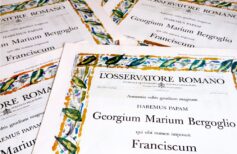


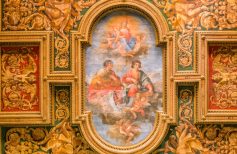
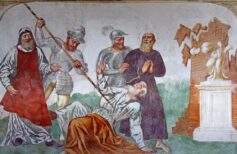

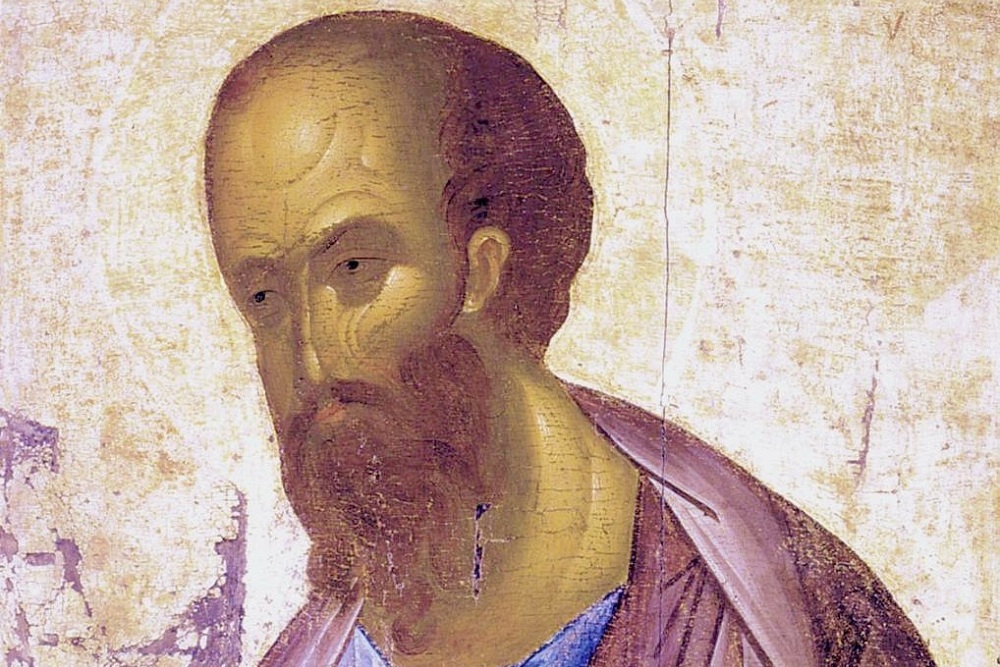
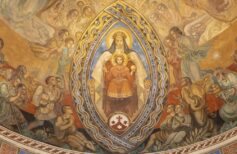
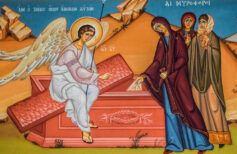








 19 March 2025
19 March 2025






